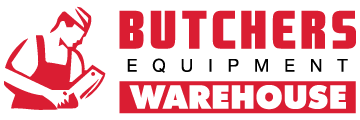Are you storing your meat and fish properly?
The onset of the Covid-19 crisis in 2020 has taught the world a great many lessons, not least among them the danger that bacteria can pose to human health. That’s why it’s more important than ever for everyone in the food industry - including butchers - to ensure that they have adequate procedures and facilities in place for processing and storing food products.
A recent post of ours detailed some of the measures you can take to maintain the safety of your deliveries, so this week we’ll be looking at storage facilities. After all, it doesn’t matter how safely or efficiently you’re preparing your products with butchers knives and meat mincers if they’ve already been contaminated in storage! So, let’s recap the basics.
It’s all about protecting the cold chain
We’ve already highlighted in our previous post that it’s vital to ensure that all incoming products are received at the correct temperature. Once they’re safely in your hands, you’ll need to ensure they’re transferred to a dedicated storage room as quickly as possible, in order to maintain the integrity of the cold chain. (You probably know all about the cold chain, but to recap it quickly, it’s the widely-used term that refers to all measures taken to transport and store products within a certain low-temperature range.)
There are a huge range of reasons why maintaining the cold chain is so important, but they can all be essentially summed up by the following four reasons:
- It guarantees the health and safety of whoever ultimately consumes the food products, by keeping them free from bacterial infection
- It ensures that anyone involved in supplying and processing the products (including butchers) complies with all their health and safety responsibilities in accordance with the above
- It protects the quality of the food products in question, maintaining their level of nutrients and taste
- It reduces wastage of meat and fish products, particularly since they tend to be the most expensive type of food kept in the kitchen
Maintain correct storage methods in your cold rooms
All meat and fish products must be stored in cold rooms, at temperatures either chilling or freezing depending on the type of product. Below, we’ve outlined a set of guidance which will deal with cold rooms at chilled temperatures, while the set after that will deal with freezing.
Before we dive into those, though, we should say that whatever the exact temperatures you’re dealing with, the key thing is to ensure that you’re maintaining proper storage systems. The correct organisation of your cold rooms not only guarantees adequate health and safety for your staff and quality of the food products, but also improves productivity.

One of the most important steps you can take in the process of organising your cold rooms is to check that food containers are properly separated. This ensures that there’s sufficient airflow between them, and keeping raw and cooked foods apart also protects against the dangers of cross contamination.
As part of that system the order of your shelves should also be a top priority.
- Prepared foods should go on the very top shelves. This avoids the risk of cross contamination because it means that liquid runoffs from other foodstuffs don’t drip down onto them.
- Raw meat and fish should go on the middle shelves.
- Any foodstuffs that release significant amounts of liquids should go on the bottom shelves, as putting them here means they’re not dripping down onto other products.
How to maintain quality in chilled cold rooms
The ideal refrigeration temperatures for chilled cold rooms tend to be between 0 and 4oC, but as a bare minimum they should be kept somewhere between 0 and 8oC. If you have a mix of products in your cold room that require different temperatures, the overall temperature of your cold room should always be at least as cold as the lowest-temperature product requires.
Prepared food, any products of animal origins and vegetable-based products should ideally be stored in different cold rooms, but if you only have one on your premises, then at the very least these products should be kept apart. Cold rooms can require particularly careful management depending on how much room you have available - you’ll have to take care not to fill them to overcapacity, and for obvious reasons food containers should never be placed on the floor. Just as a general hygiene measure, if nothing else!
They also must be kept clean and dry at all times, both to protect the hygiene of the food, and to maintain general health and safety standards for workers (reducing the chances of slips and falls etc).
Staff must also be aware of the importance of maintaining a detailed labelling system, indicating crucial information like the name, origin, and weight of a product, and the date at which it entered the cold room (amongst other things).

How to maintain quality in freezer chambers
Without exception, freezer chambers must be below 18oC in order to do their job effectively, since frozen products need to be at this temperature or lower. Most of the guidelines we’ve outlined above still apply, and you may well also find that it’s helpful to have specialised containers on hand to properly store frozen products. Plus, it’s worthwhile to ensure that you’re using freezers which guarantee quick freezing, so that you can minimise the amount of metabolic activity that occurs while you’re getting the products in question down to the desired temperature.
In fact, here’s where we should also probably highlight something that many people often forget - frozen food can only be stored for a limited time. Metabolic activity doesn’t stop completely in freezing temperatures, but simply continues at a much reduced rate. If you keep food products frozen for too long, it can eventually result in freezer burn, which dries out the surface of the food and alters their taste, colour, and overall quality. (You can recognise the signs of freezer burn by looking out for any dry spots, and a change in colour in your food products.)
These are the bare basic measures that all butchers shops and retail environments should be taking to protect the quality of your food. Since the world is still recovering from the worst effects of the Covid-19 crisis, you may see fit to implement some additional measures of your own, to ensure the safety of your staff and customers. We’ll leave those decisions up to you - but here at Butchers Equipment Warehouse, what you can expect from us is top-tier butchers knives, meat mincers and other equipment, helping you to efficiently process your meat products. You can browse them right here on our site, or if you’ve got any questions or need any advice, don’t hesitate to give us a call on 01254 427761!




